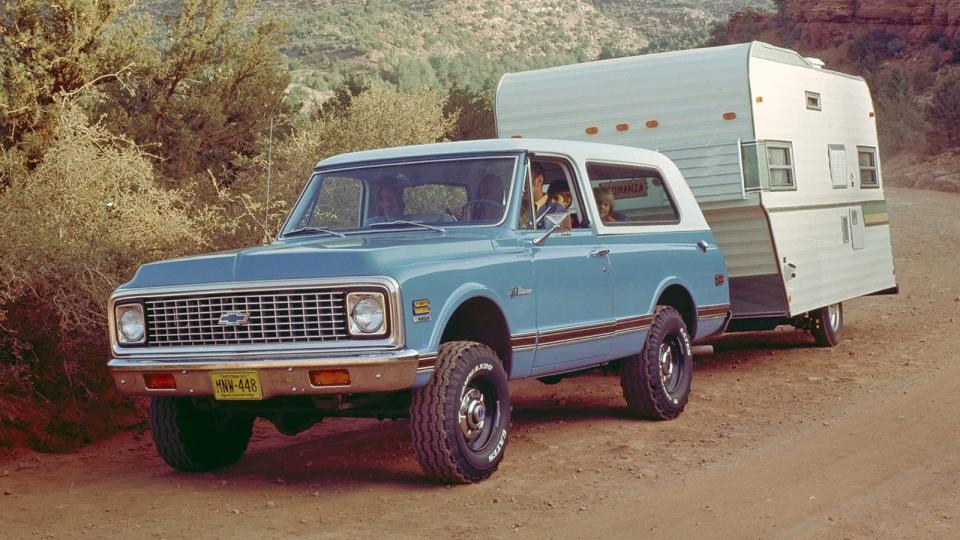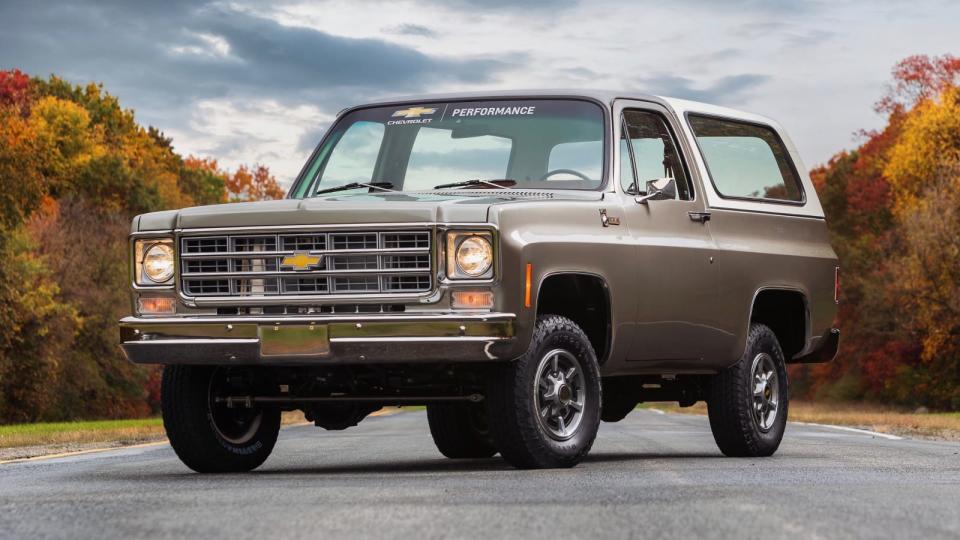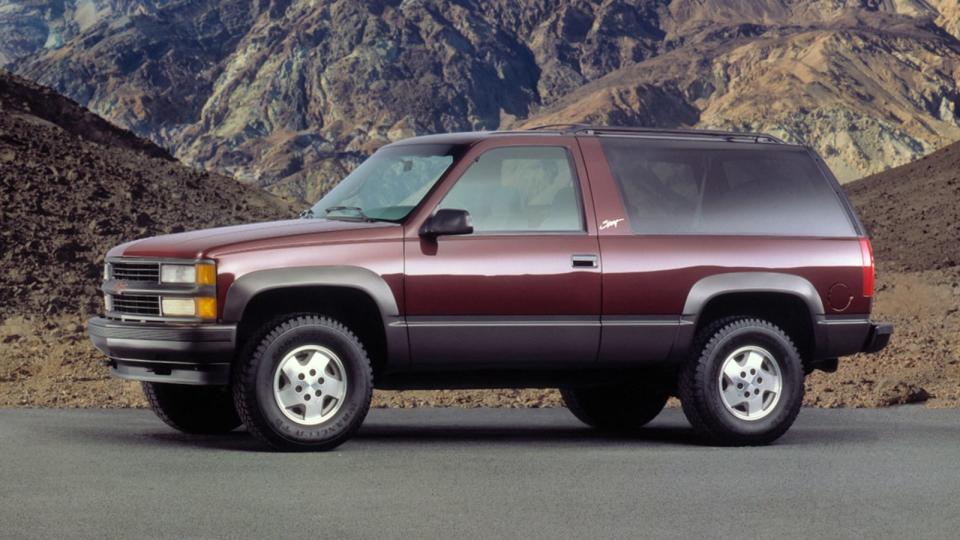Chevy Blazer history: from bare-bones convertible to modern EV

Chevy has mostly revealed its newest Blazer, which, like many before it, goes in a unique new direction. It's going fully electric, and it will be offered in front-, rear- and all-wheel drive versions, all with a focus on on-road driving and performance. But as it turns out, big Blazer changes aren't all that unusual for the nameplate. It started as a full-size truck-based two-door, but since then, it sprouted smaller models, four-door models, and of course the current pavement-pounding model. Let's take you through the Blazer's interesting history.
Full-size Blazers

First Generation: 1969 to 1972
We start with the Blazers most people think of first, the full-size, truck-based models. It was introduced for the 1969 model year as a shortened, convertible version of the Chevy C/K full-size pickup trucks. In fact, it's prefix of K5 follows the truck nomenclature (C10 was a two-wheel-drive pickup, K10 had four-wheel-drive, C20 and K20 were heavier-duty). And instead of a separate bed, it had a single-piece body, mounted on a shortened frame. The wheelbase was 104 inches, and the whole truck was about 177.5 inches long. It was 11 inches shorter in both measures compared to the shortest pickup. And besides the unique body, the truck was available with a removable fiberglass top.
That top wasn't standard, and in fact, the Blazer hardly came with anything as standard. It only came with one seat, though you could option in a front passenger seat and rear bench. Fancier seats and more features were of course available, too.
Speaking of options, Chevy offered three different engines for the first generation of Blazers. Standard was a 250-cubic-inch inline-six, with options for a 307 V8 or a 350 V8. Manual transmissions with three or four speeds were available along with a three-speed automatic.
Four-wheel-drive with a two-speed transfer case was of course offered, along with a simple two-wheel-drive model. They each got different suspension, though. The four-wheel-drive version got solid axles front and rear with leaf springs. With two-wheel-drive, you got independent front suspension and a solid rear axle with coil springs all around. The first two years for the Blazer, only drum brakes were available, but front discs became available for 1971.

Second Generation: 1973-1991
The longest-running generation of Blazer was easily the second, surviving for nearly 20 years. Like before, it was based on the full-size pickup, which was also redesigned at the same time. The basic bodystyle was the same with two doors and a removable roof, but with revised styling. It was also bigger. The wheelbase was 106.5 inches and total length was 184.4. Two- and four-wheel-drive versions were available, with the two-wheel-drive version getting updated suspension. Now it had leaf springs at the back, though coils stayed for the front. The four-wheel-drive version stuck with the solid axles and leaf springs all around.
Over the course of nearly 20 years, the second-generation Blazer stayed pretty much the same, but did receive some tweaks over time. New lights and grilles were introduced periodically, and the body changed to feature a solid half cab over the front passengers starting in 1976. It still had an available removable hardtop, but also had the option for a folding soft roof. The engine selection started with a 250-cubic-inch six, a 350 V8 or a 400 V8, with a 305 becoming available later. Eventually, a naturally aspirated 6.2-liter diesel V8 became available, which was used in military-spec Blazers, and in 1990, a fuel-injected 350 was offered, along with a four-speed automatic. Most of the rest of the time, the Blazer was available with three- and four-speed manual transmissions or a three-speed automatic.

Third Generation: 1992-1999
Though the second-generation Blazer lasted the longest, the third-generation represented the biggest change for the SUV. It was a slightly weird one, too, since the Blazer name was dropped in 1995 for the Tahoe name, along with a four-door option. This one was based on the GMT400 full-size truck and SUV platform. It adopted the smoother shape of the trucks down to the flush-fitting door handles, and it featured a much plusher, more finished interior than its past iterations (it actually had standard rear seats!). It also lost its removable roof altogether. The retracting rear glass was also gone in favor of a split tailgate and later barn doors. It also became the biggest full-size Blazer at 187.7 inches long overall, and a wheelbase of 111.5 inches.
Only one engine was available at first, a fuel-injected 350-cubic inch V8 with a 6.5-liter turbodiesel V8 coming later. Transmissions included a five-speed manual or a four-speed automatic. Initially, it was also only offered with four-wheel drive, though two-wheel drive came in 1995 when the Blazer name.
Like past Blazers, the third generation was still body-on-frame construction. But now all Blazers got independent front suspension. The four-wheel-drive ones had torsion springs up front, while two-wheel-drive ones got coils. They all had solid rear axles with leaf springs. The third generation was also the first to have standard anti-lock brakes.
The full-size Blazer, in Tahoe form, came to an end with the GMT400 series of trucks in 1999. The two-door body style was discontinued in favor of four-door Tahoes only.

 Yahoo Autos
Yahoo Autos 
